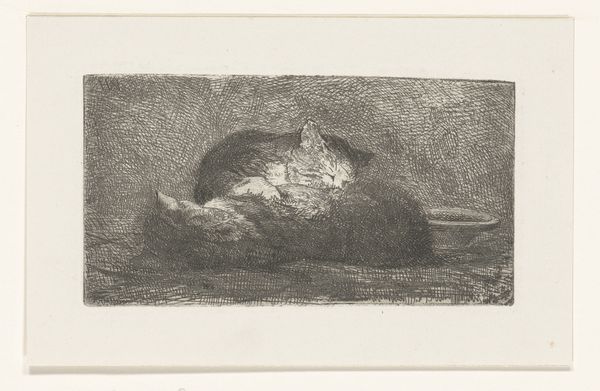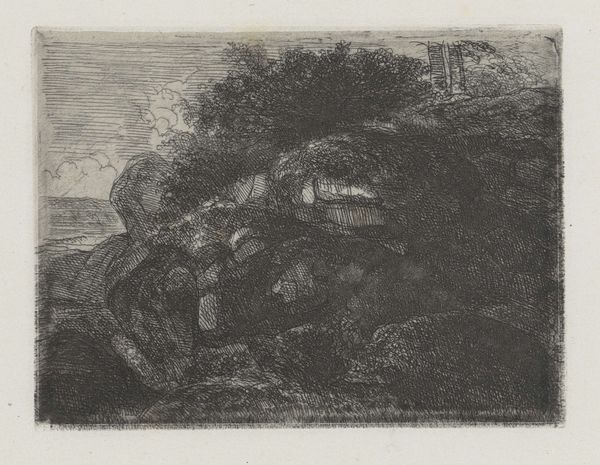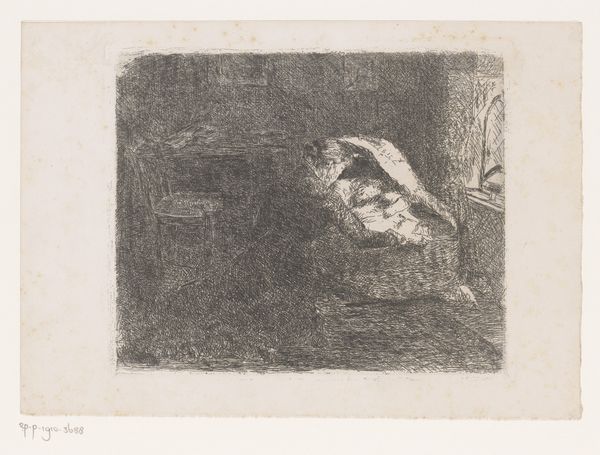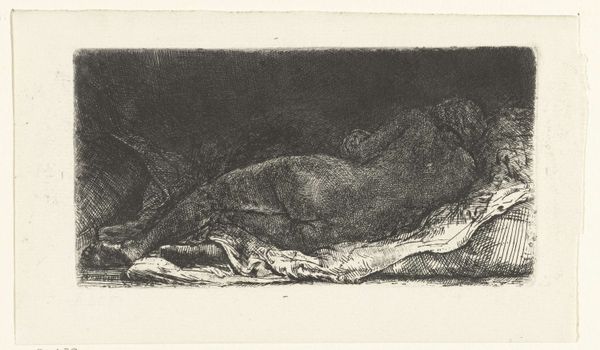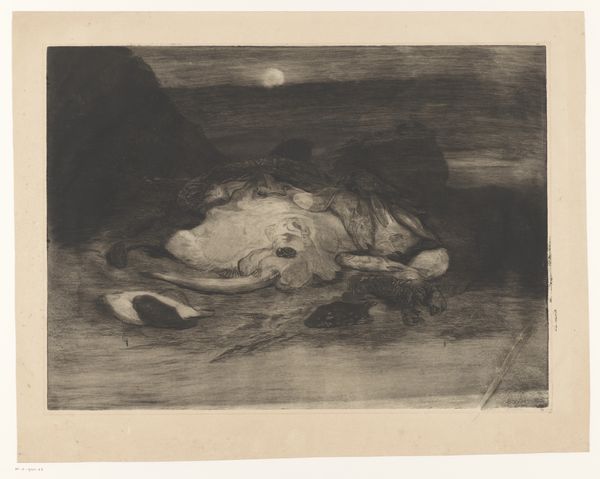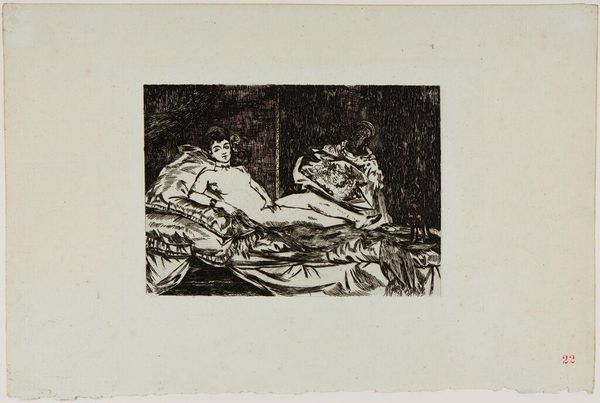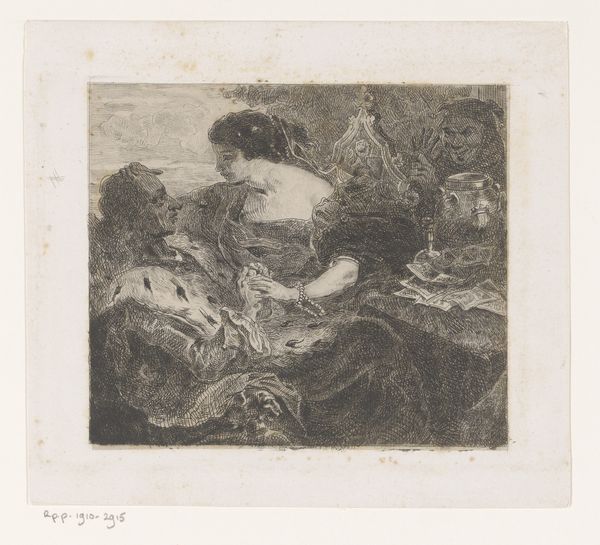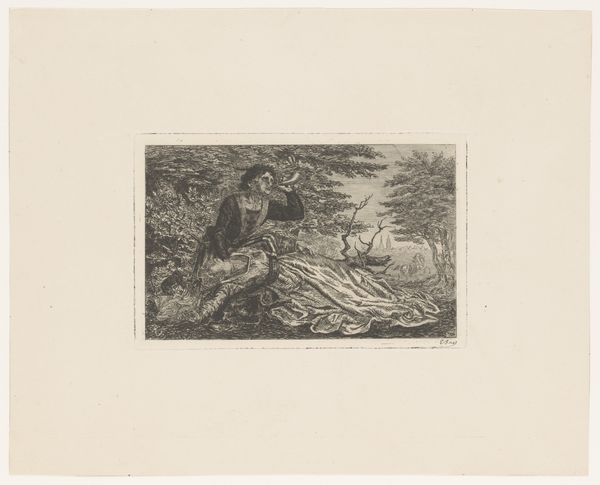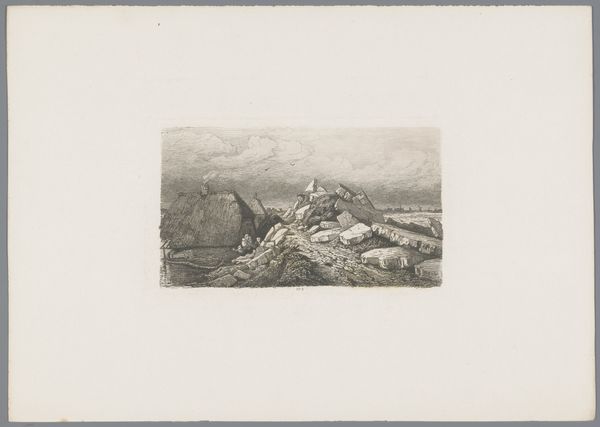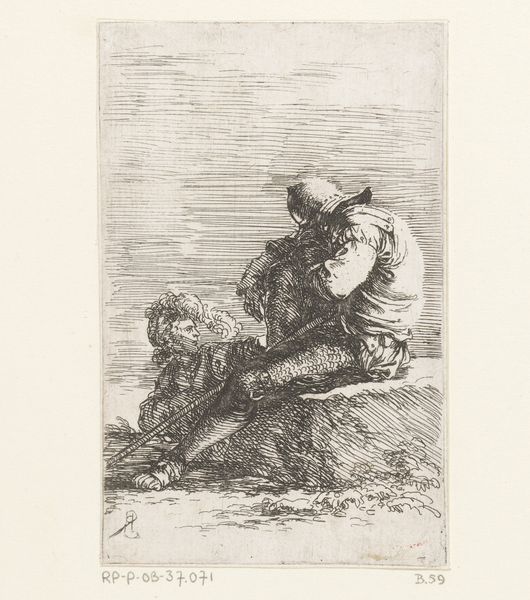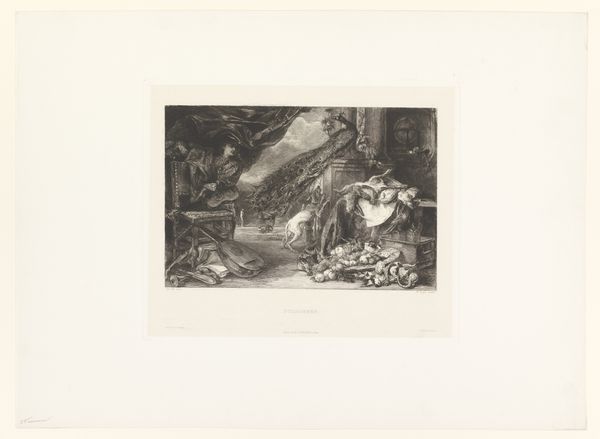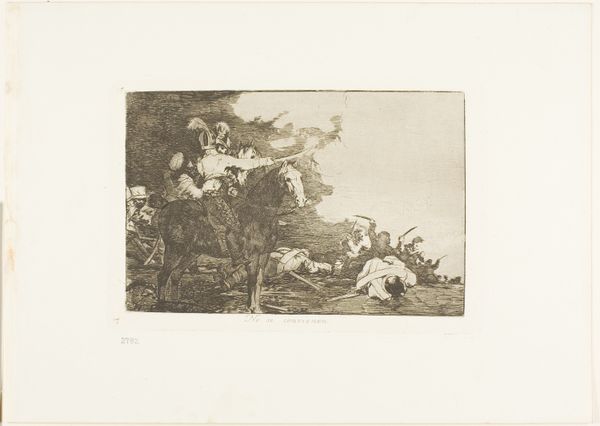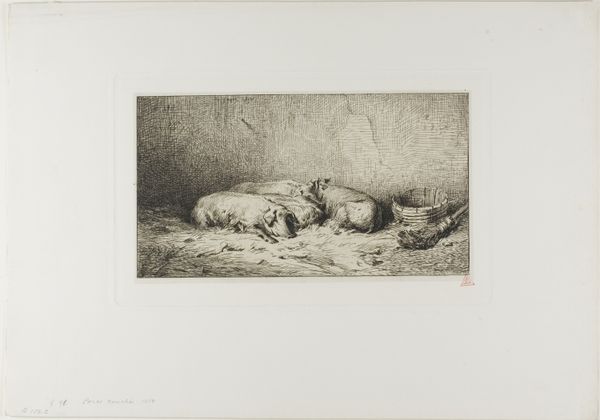
print, etching
#
animal
# print
#
etching
#
realism
Dimensions: height 52 mm, width 99 mm
Copyright: Rijks Museum: Open Domain
Curator: Here we have "Twee katten," or "Two Cats," an etching by Herman Johannes van der Weele. The piece probably dates between 1862 and 1887, though its precise creation date is uncertain. Editor: What immediately strikes me is the incredible intimacy of the scene. The close-up perspective emphasizes the intertwined cats in what looks like peaceful repose, inviting the viewer into their shared warmth. There’s also an undercurrent of something… melancholic? The monochromatic etching emphasizes shadows. Curator: Indeed. Weele, who associated with the Hague School artists, often turned his gaze to scenes of everyday life. Prints such as this one reveal a rising interest, at the time, in domestic life and sentimental portrayals of animals. Consider how new pet-keeping practices reshaped social attitudes! Editor: Exactly. Viewing this etching through a contemporary lens, I wonder about the social implications surrounding domestic animals during that period. Were pets status symbols? Companions in increasingly isolated urban environments? Curator: Both valid points! And artistically, van der Weele employs a wonderful realism to detail the cats’ fur and relaxed posture. I feel that his handling of light here lends them a real sense of weight and volume, especially when considering the print medium. Editor: Agreed. And perhaps van der Weele implicitly comments on our human need for comfort through depicting the tender bond between the cats, which might be relatable particularly in times of immense social upheaval as Europe marched toward the first World War. Were animals serving as emotional anchors, maybe especially for women, considering broader social and familial structures? Curator: Those social relationships are definitely an element worth exploring. Van der Weele presented a sanitized picture of working class family in his painting: do pets play an active role, or stand merely as the focus of idyllic leisure? It seems open for debate. Editor: Art should provoke that kind of conversation. I like that this work, small as it is, touches on comfort, societal expectations, and perhaps loneliness, all bound up in the lives of these quiet, domestic companions. Curator: An insightful assessment of a deceivingly intricate print, underscoring that the "realism" label must always been viewed critically, and in context!
Comments
No comments
Be the first to comment and join the conversation on the ultimate creative platform.
